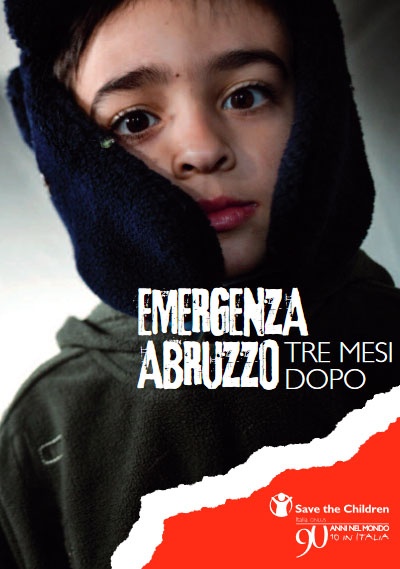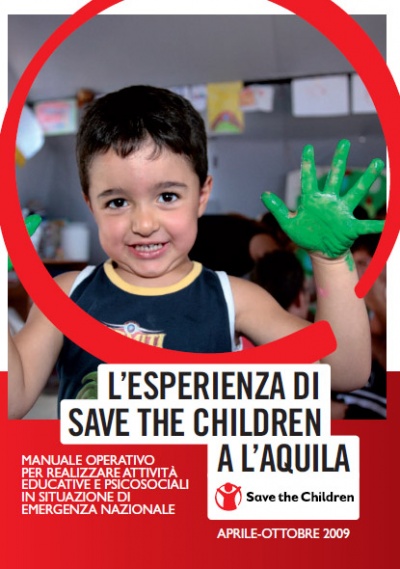Nella notte del 6 aprile 2009, alle 3.32 una violenta scossa di terremoto colpisce la città de L’Aquila e numerosi comuni nella zona. La scossa raggiunge i 5,8 gradi della scala Richter ed è la più forte tra quelle che da giorni e da mesi in verità colpiscono la città a più riprese, durante il giorno e durante la notte. L’impatto della scossa è disastroso: 308 vittime, di cui 22 hanno meno di sedici anni; oltre 1.500 i feriti, oltre 65.000 gli sfollati, 23.000 circa le case distrutte: la Protezione Civile le ha dichiarate man mano inagibili o solo parzialmente agibili, ma la gente per giorni ha preferito non tornarci. Alcuni centri abitati sono stati quasi interamente rasi al suolo. Anche Save the Children immediatamente interviene per portare supporto ai bambini e adolescenti vittime del terremoto e alle loro famiglie. Per Save the Children Italia si tratta del primo intervento in situazione di emergenza, ed è condotto con l’ausilio della International Save the Children Alliance che mette a disposizione procedure e standard già sperimentati in altri contesti. Con il contributo di operatori locali e di uno staff appositamente dedicato, nel giro di pochi giorni vengono allestite quattro tende, destinate ad accogliere bambini e adolescenti e a coinvolgerli in attività psicosociali, ludiche ed educative a partire dal rispetto di alcuni diritti fondamentali sanciti nella CRC: sono le tende chiamate “Spazi a Misura di Bambino” o CFS (Child Friendly Space). Nel rapporto, vengono illustrate le attività di Save the Children Italia nel corso e nel post emergenza.
On the night of April 6, 2009, at 3:32 a.m., a violent earthquake struck the city of L'Aquila and numerous municipalities in the area. The quake reached 5.8 on the Richter scale and is the strongest among those that have actually hit the city several times for days and months, during the day and during the night. The impact of the quake was disastrous: 308 victims, 22 of whom were under the age of sixteen; Over 1,500 injured, over 65,000 displaced, about 23,000 houses destroyed: the Civil Protection has gradually declared them unusable or only partially usable, but people have preferred not to return for days. Some towns have been almost entirely razed to the ground. Save the Children also immediately evaluated how to intervene and, thanks to the experience gained by other Save the Children in the international arena, went to the site to bring support to the children, girls and adolescents who were victims of the earthquake and their families. For Save the Children Italy, this is the first intervention in an emergency situation, and is conducted with the help of the International Save the Children Alliance, which provides procedures and standards already tested in other contexts. With the contribution of local operators and a specially dedicated staff, four tents are set up within a few days, intended to accommodate children and adolescents and to involve them in psychosocial, recreational and educational activities starting from the respect of some fundamental rights enshrined in the CRC: these are the tents called "Child-Friendly Spaces" or CFS (Child Friendly Space). The report illustrates Save the Children Italy's activities during and after the emergency.

